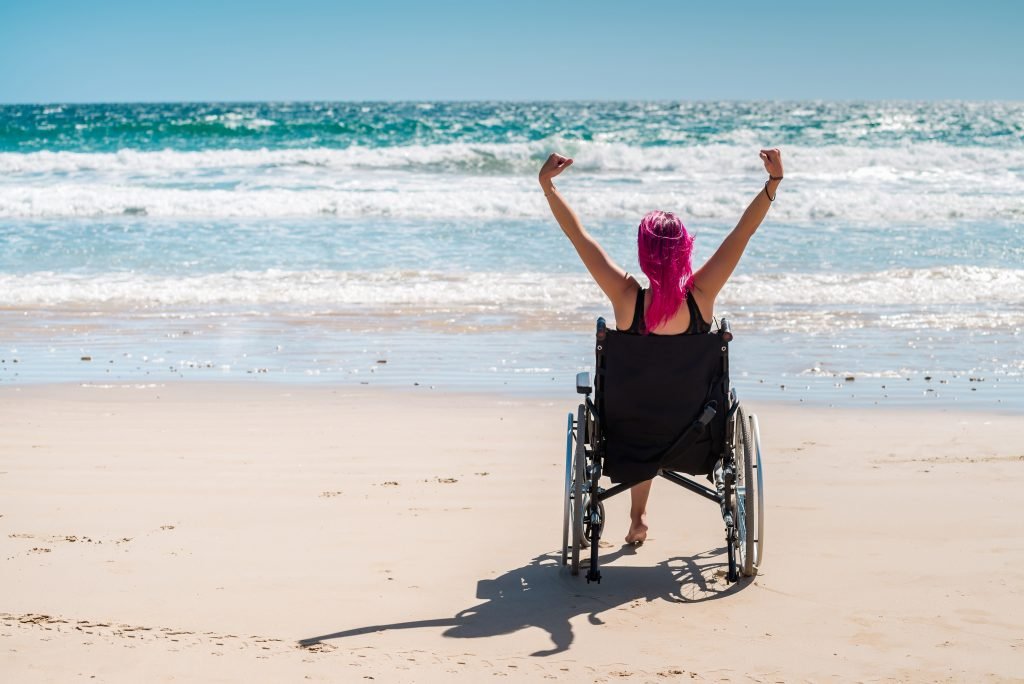In Italy there are approximately 10 million people with “Access Needs”, i.e. access needs of disabled people who require services and environments without architectural barriers such as the need for wide ramps or lifts for wheelchair access, accessible text for the visually impaired or suitable toilets.
The aim of examining the “Access needs” is undoubtedly to ensure that everyone has the opportunity to access services and opportunities, even especially when they travel, in a fair way and without discrimination and barriers. Italy, with Law 18 of 2009, ratified the United Nations Convention on the Rights of Persons with Disabilities. The aim is to promote, protect and guarantee the full and equal enjoyment of all rights by persons with disabilities.
These also include the affordable tourismtherefore the possibility to enjoy holidays and free time in a satisfactory way without obstacles or difficulties and therefore in conditions of autonomy, security and comfort, as stated in the first “White Paper on Tourism for All in Italy” created in 2013 by the Commission for promotion and support of accessible tourism.
For a person with a disability, holidays often remain a utopia: from the parking area to the toilets, to the corridors for beach access or water access, obstacles are scattered everywhere. In Italy alone there are around 5,000 kilometers of swimming coastline: but is it a sea for everyone? No, not for all disabled people
Every person with a disability, before organizing any trip, must carry out “extra work” also known as “hidden disability work“, consisting of all those extra actions and things that people with disabilities have to do to organize something. Extra work, however, is rarely recognized.

Cultures
Google Maps: a new setting dedicated to accessible places is coming
A typical example can be found during choice of hotel for the trip. While anyone only needs a few clicks to choose the hotel based on the view they like best, for disabled people there are endless emails to understand if the hotel is really accessible (a prime example is when the presence of the elevator but that is too narrow to accommodate a wheelchair).
Undercover work he also hides in other situations such as wanting to participate in a concert (it’s not enough to buy a ticket like everyone else, but even in this case it’s a series of emails, bookings, phone calls hoping to find a seat and above all… what a seat! Often, unfortunately, very far from the stage and with very low visibility).
Rather, it would be appropriate to recognize and reduce it additional load disabled people even in leisure situations such as holidays or concerts.
We, with this article, want to show you which Regions have received Purple flag thereby demonstrating a specific commitment.
But what does it mean to be a Purple Flag Municipality? It means you’ve worked to make it accessible many of which can be made accessible and improved is constantly improving its tourist accessibility, day after day, year after year
Here are the municipalities awarded the purple flag in the various Italian regions:
- Abruzzo: the Lille flag areas are Alba Adriatica and Tortoreto
- Basilicata: stood out in accessibility for the Policoro area
- Calabria: its most accessible area is in the Rocca Imperiale which has been awarded the flag of Lille
- Emilia Romagna: awarded the purple flag for Fiumalbo and Fontanellato
- Lazio: acquired Lille’s flag for Minturno’s waterfront
- Liguria: is a coastal area that boasts many accessible areas such as Albissola Marina, Camogli, Diano Marina, Finale Ligure, Levanto, Loano, Pietra Ligure, Santa Margherita, Sarzana and Spotorno. Many beaches have been adapted to guarantee access for people with disabilities and to enjoy the natural beauty that Liguria offers.
- Lombardy: the most accessible area is Sirmione
- Brand: has some accessible areas such as Castelleone di Suasa, Civitanova Marche, Cupra Marittima, Grottammare, Porto S.Giorgio, Senigallia
- Piedmont: awarded the Purple Flag for the municipality of Baveno.
- Sequins: it is probably one of the most accessible areas of Italy and the municipality of Maruggio has received the recognition of the purple flag
- Sardinia: its most accessible areas are Budoni, Golfi Aranci and La Maddalena
- Sicily: the Purple Flag was recognized in Ali Terme, Avola, Furci Sicuro, Geraci Siculo, Ispica, Letojanni, Modica, Nizza di Sicilia, Roccalumera, Santa Teresa di Riva, San Vito Lo Capo, Savoca, Tusa
- Tuscany: its accessible municipalities are Castiglione della Pescaia, Marciana Marina, Peccioli, San Vincenzo
- Trentino Alto Adige: the most accessible city is Riva del Garda.
- Veneto: has two accessible municipalities, Malcesine and Porto Viro.
To stay updated, I recommend you follow the bandalilla.it website
Receiving the Purple Flag is therefore undoubtedly a recognition for a tourist destination because it concretely demonstrates a real commitment to return a truly enjoyable and inclusive travel experience for anyone without any discrimination. This recognition is an important step towards inclusive tourism that will allow everyone to enjoy the beauties of Italy without barriers and without “extra work”.
Backpack on your shoulders and… happy holidays everyone!

